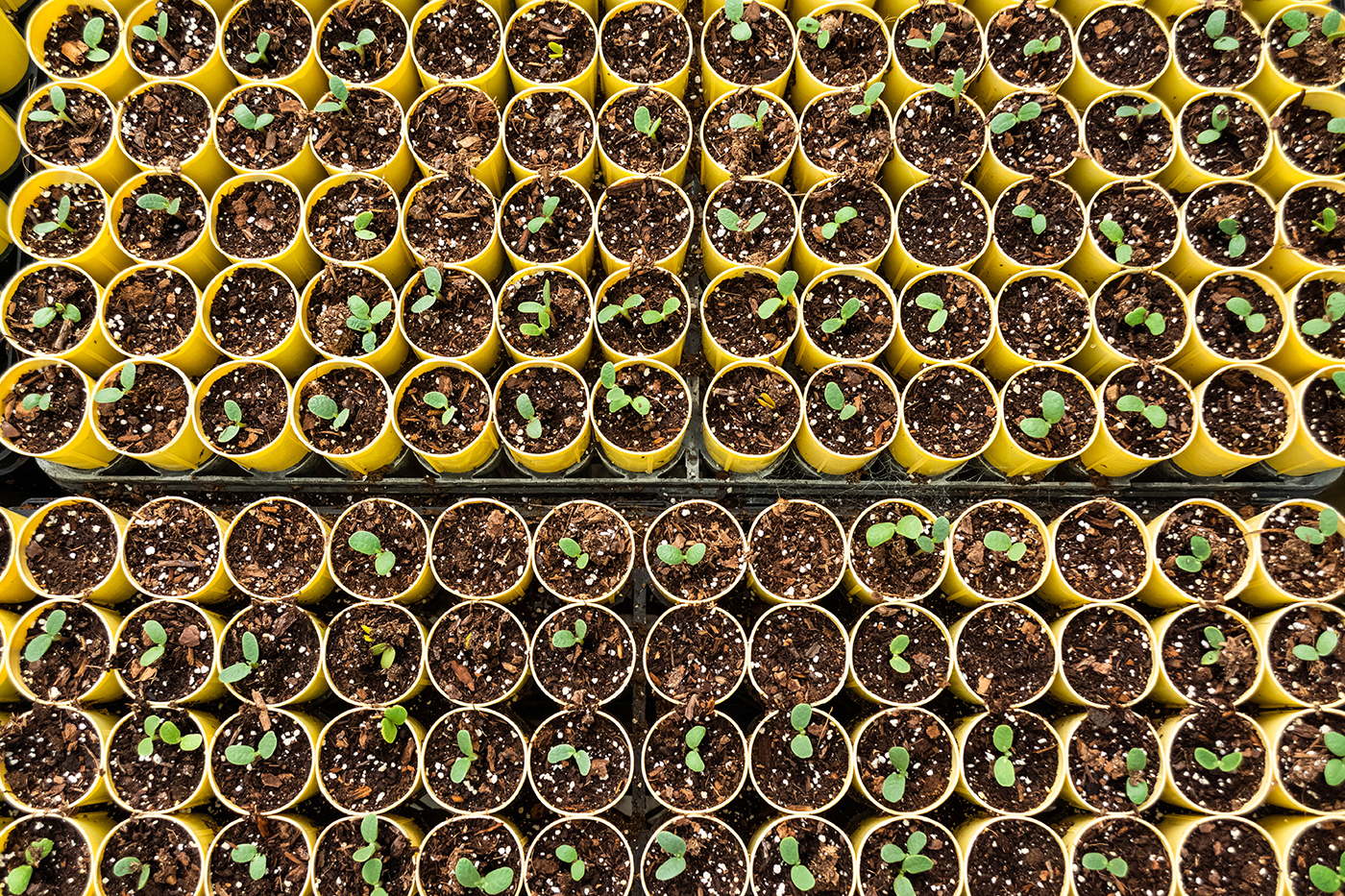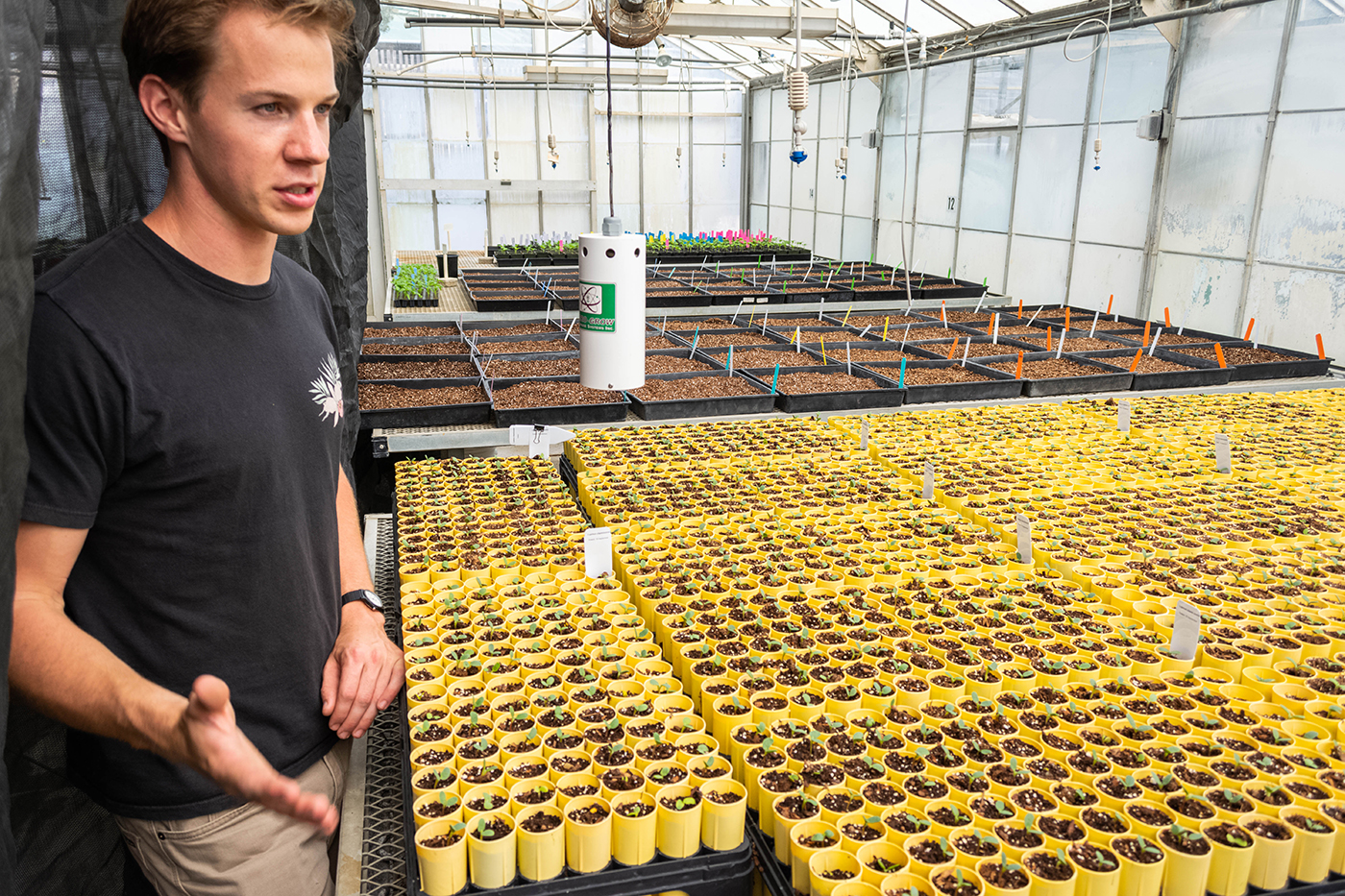The air quality on the Nipomo Mesa is sometimes so polluted it is classified as hazardous to all people. Cal Poly students are working to help mitigate the problem.
Cal Poly students planted about 35,000 seeds Sept. 18, 20 and 21 in a greenhouse on campus. These seeds will be used to revegetate the Oceano Dunes after many native plants have been crushed by off-road vehicle recreation, according to horticulture professor Mike Bush.
These plants anchor sand to the dunes with their root systems, Bush explained. The roots hold the sand in place, mitigating dust from blowing off of the dunes when it is windy.
The fine dust particles from the Oceano Dunes is a leading contributor to the dangerous air quality.
“By planting these plants, we’ll be affecting the air quality as a whole. It’s just really fulfilling,” agricultural and environmental plant sciences sophomore Lauren Alamillo, who worked on the project last year, said. “We’re guests on this Earth, and if we want to enjoy it, we need to take care of it.”
Without plants to stabilize the sand, more dust may blow into the air and lungs of Nipomo Mesa residents, potentially harming their health.
More than 130 Nipomo residents filed complaints with the San Luis Obispo Air Control District that dust pollution aggravated asthma symptoms and prevented them from going outside from May 29, 2012 through Oct. 19, 2017 . In addition, the park violated air quality standards 363 times from 2012 to 2017, according to the San Luis Obispo Air Control District.
“These are real world problems that our students can solve and can feel that they’re taking an important step in saving the dunes, and creating a more healthy situation for the people who live downwind,” Bush said. “They can be part of the solution through hands on learning here at Cal Poly.”
The park initiated restoration efforts to satisfy an agreement with the San Luis Obispo Air Control District to improve Nipomo air quality, according to a stipulated order of abatement.
Last year, Cal Poly students planted 3,000 seedlings on an acre of Oceano Dunes, and State Parks revegetated other parts of the dunes, according to Bush. This year, PM10 emissions have declined by 22 percent, according to a report from State Parks.
“I was in the original bunch of tree huggers in the 70’s … and this is a way I can sustain that feeling of being connected to the environment and being an advocate for positive change,” Bush said.
More rain or less wind could have lessened emissions from the dunes, but it is also possible that the new plants filtered PM10 and improved the air quality, Bush explained.

Planing on the dunes
This year, students on the project have been hard at work growing plants for the dunes.
They are growing 12 species of plants native to the Oceano Dunes, including the Dandelion, Lupine and Evening Primrose. All of the seeds were collected from Oceano Dunes by State Parks and the California Conservation Corps, Bush said.
Different species had to be planted in different ways, agricultural and environmental plant sciences sophomore Henry Main said.
Some of the smaller seeds were loaded into a salt shaker and sprinkled onto a bed of soil, whereas Lupine seeds, which are about the size of a bean, were planted into individual cells, Main said.
“We want the plants to be as strong as possible. It’s brutal, it’s windy — a day or so after it rains it’s dry,” Main said about the harsh environment of the dunes.
After the seeds grow into seedlings of about two to four inches tall, they will be transplanted into pots and transferred into an open air greenhouse, Main said.
The open air greenhouse will protect the seedlings from rain, but not from wind or temperature change, preparing them for the dunes, Bush said.
Bush hopes to deliver 28,000 seedlings to State Parks for planting, which will take place in January and February during the rainy season.
“I spend far more hours working and volunteering and just messing around and playing within my field than I do in class or doing homework,” Main said. “I feel great, surrounded by oxygen pumping plants all day long.”
In addition, this project is a way for those involved to give back to the environment, Bush said.
“I was in the original bunch of tree huggers in the 70’s … and this is a way I can sustain that feeling of being connected to the environment and being an advocate for positive change,” Bush said. “I think we will all be in a better place when more and more people choose to leave the world a better place than what it was before.”

